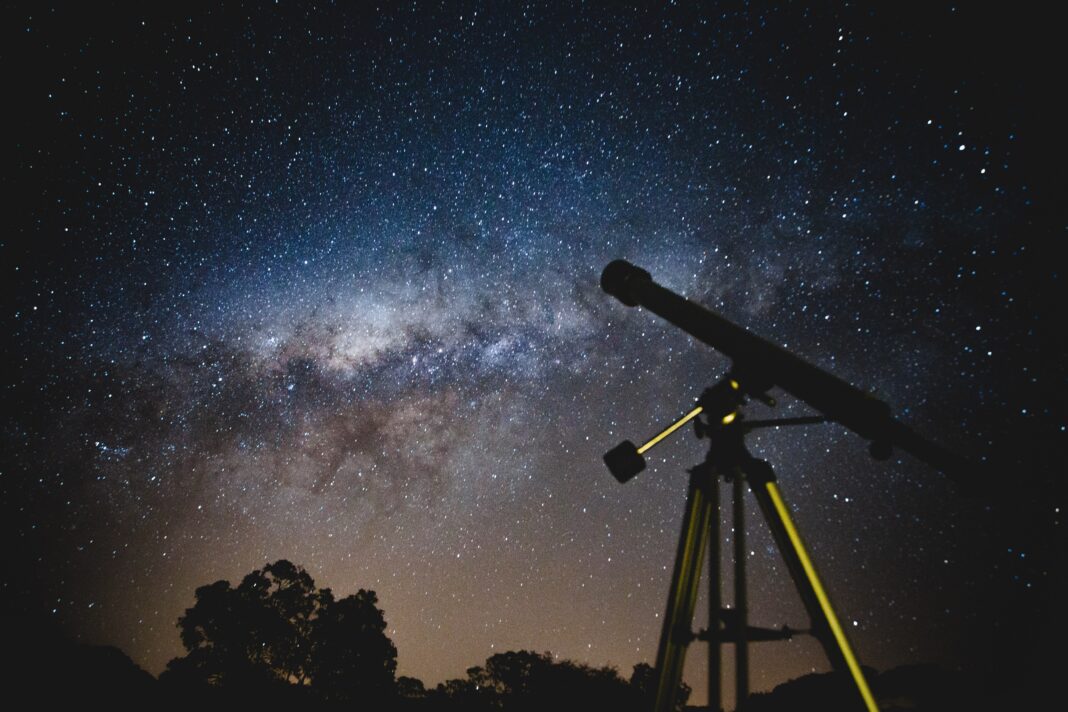Excited persons are asking what that bright light is shining in the east before dawn. Regular readers know it is Venus, shimmering and showing off. The brilliance is the result of sunlight reflected from that light striking the sulfuric acid clouds in the mostly carbon-dioxide atmosphere of our “sister” planet. The brilliance of our neighbor is always a beacon whether Venus is in the morning sky or the evening sky. The length of time our two planets take to orbit the sun affect how many months Venus is visible as either the evening or morning star. But you cannot miss it when it is there, that is for sure.
For a while longer the lineup mentioned in several recent columns will consist of the same planets, Saturn, Venus, Jupiter, and Mars, and eventually Mercury will briefly appear as well. That speedy planet is difficult to catch a glimpse of because it is so close to the sun.
The full moon of Easter has given way to the waning phases of our Luna, which means the moon rises well after midnight and can be glimpsed faintly in the daytime sky until the sun’s brightness interferes.
Constellations in the sky seem more difficult to detect these days between all the light and dust pollution over our Valley skies and the persistent clouds that dim the stars from view unless one is in a place far from city lights. If you are willing to head to one of those dark sites, then the spring constellations in the predawn sky include Aquila and Pegasus, evening constellations in the late summer. If you spot the four planets, these constellations area around them. Around 10 p.m. in the east, up near the zenith will be the kite shape of Boötes, the Herdsman, holding the leash of his two dogs used to keep Ursa Major and Ursa Minor in their perpetual circling of the North Star, Polaris.
Boötes hosts a lovely reddish star, Arcturus, in the tip of the kite. If you have a clear view of the north and can locate the Big Dipper asterism, then use this mnemonic to locate a couple other constellations: Follow the arc (of the handle stars of the Big Dipper) to Arcturus, spike to Spica (the diamond in Virgo’s hand), and keep on to Corvus the Crow. Corvus is a trapezoid sitting on top of the long string of faint stars that mark Hydra. The stars will be faint and southeast.
On April 27, 1972 the Apollo 16 astronauts landed on the moon. John Young and Charlie Duke walked the lunar surface and had adventures driving the dune buggy moon-rover on the Descartes highlands, 7,400 feet higher than the Sea of Tranquility where earlier landings took place. Ken Mattingly kept the porch light on the orbiting home spacecraft. You might enjoy reading about Charlie Duke’s take on life after being a moon walker. He went on to begin a Christian ministry and spoke openly about walking on the moon being not as amazing as walking with God.
The precise patterns of our solar system create the math that makes our space missions to our moon and other space destinations possible to achieve amazing accuracy at landing sites. The Apollo 16 lander was less than 30 yards from the target area, near craters that could contain samples of lunar bedrock. One rock caught the eyes of one of the back-on-earth geologists watching and he indicated he wanted them to collect the football-sized rock they nicknamed “Big Muley” after the geologist who requested its recovery, William Muehlberger.
Until next time, KLU.





